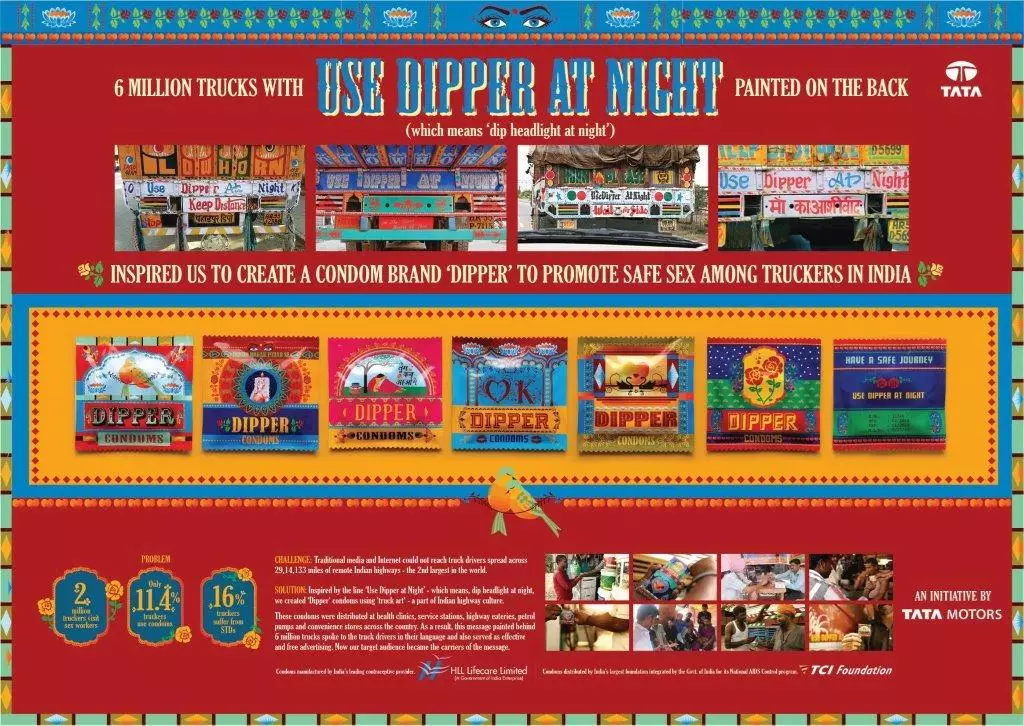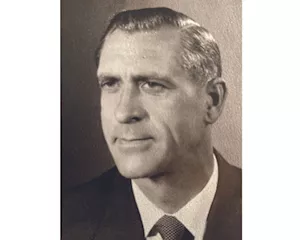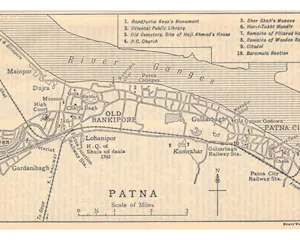Dhunji Wadia - president at Rediffusion says: If there is no challenge, then what’s the point
PrintWeek India talks to Dhunji Wadia, president, Rediffusion - Y&R about all things advertising.
26 Oct 2016 | By Payal Khandelwal
For a long time, Rediffusion Y&R, an agency known for some of India’s most iconic ad campaigns, had been skittishly skating in the advertising landscape. One of the biggest reasons for that was its flimsy relationship with its senior leaders. In 2014, after the exits of many senior leaders, the agency roped in Dhunji Wadia as its new president. Wadia, of course, wasn’t new to the system; he was already successfully handling the operations of the group’s smaller agency- Everest Brand Solutions.
While hiring Wadia, Diwan Arun Nanda, chairman, Rediffusion-Y&R, had said this in a press release, “Dhunji has strong business acumen, great entrepreneurial instincts and affinity for our clients’ businesses. What makes it all work is his ability to motivate and inspire people on all sides of the business. He’s an ideas guy who gets that great creative work and strategic insights are inextricably connected.”
Wadia has over 25 years of experience. Before Everest, he had spent around 18 years with another ad behemoth- JWT India, leading its operations in Bangalore and Mumbai. During his tenure, the agency bagged quite a few prestigious awards for its work.
Today, Wadia is proud of what Rediffusion has achieved under his leadership so far. And he should be. Over the last one and a half years, Rediffusion has managed to create a pretty strong and impressive showreel, and scooped awards for their work including Make in India and Dipper Condoms (for Tata Motors). We speak to Wadia about his journey in Rediffusion so far and about how he stays so calm under pressure, among other things.

PrintWeek India (PWI): When you were appointed as the president of Rediffusion, there were all these talks about the agency’s health and its relationship with its leaders etc. Did it all affect you in some way?
Dhunji Wadia (DW): I have spent my entire career in advertising, and the reason I don’t get tired of it is because at every stage my job has taken me to a completely new and different place. So I started with JWT in Mumbai, but then moved to JWT Bangalore where I was heading the operations. And that role came with a new set of challenges. We got the Levi’s and Nike business at that time through multi-agency pitches, and we made JWT Bangalore a creative hotspot.
Then I came back to head JWT in Mumbai and it was a great run. We got India’s first Grand Prix and Integrated Lion at Cannes for the Lead India campaign in 2008. In 2010, I finally decided to move out of JWT because I wanted something new, and I spoke to Arun Nanda.
With my experience, I could have started my own shop but Everest gave me a ready infrastructure to work with. It also marked the beginning of my partnership with Rahul Jauhari (chief creative officer at Rediffusion and Everest) with whom I had never worked before. So from 2010 to 2014, it was a new job for me with a completely different team members, clients and challenges. For example, when I had just come in, Everest’s largest client Parle had stopped talking to us, and today we handle almost 90% of Parle’s business. I think we have been able to do a fine job at Everest.
And then in 2014, they expanded my role. It was a big challenge of course, but if there is no challenge, then what’s the point? That was my motivation. I am more of a doer than I a talker, and in the last one and a half years, we have created an impressive showreel and won prestigious awards. We have made progress.
PWI: How has your work relationship been with Rahul Jauhari over the years? Do you guys have watertight compartments or do your roles overlap at times?
DW: Rahul and I have the maximum amount of differences between us. We disagree on things every single day, but the important thing is that once we have come to a final understanding, there is absolutely no looking back. The best part about our work equation is that it’s based on mutual trust and admiration. I trust him to make a sales/marketing presentation, and he trusts me to make a creative presentation. We have never had a situation where there has been a breakdown of communication.
I believe that I am average at what I do and I could make a lot of mistakes while working individually, but collectively we are almost always able to hit a mark. It applies to my whole team actually. I love listening to everyone’s point of view as that makes my own thinking richer. And it’s the same with Rahul. He is very hands-on with his team. The other quality of his I really admire is that he has a very good sense of business. He understands that it’s never art for art’s sake in advertising.
PWI: How different is the work culture in Rediffusion and Everest?
DW: What’s exciting about Rediffusion and Everest is that I can give the same brief to both the agencies and come up with two completely different perspectives, ideas and approaches. While Everest’s way of looking at a brief is more creative, Rediffusion is far more structured and strategic in its approach.
I am happy to be mentoring both and to be fostering a little healthy competiveness between the two agencies. I hope they both are called for the same pitches in the future.
PWI: One of the first things you did at Rediffusion was to flatten the structure. Could you tell us a bit about that?
DW: The rationalisation of levels is happening across the globe, and so from that point of view, you need to look at what’s realistic. There is pressure on margins for the agencies, and you need to do value engineering at all stages. Secondly, you have younger, hungrier operations who is willing to work at a different kind of cost structure, and that’s why you have to relook at the way you are working. You have to make sure that you have a nimble-footed organization, and that’s what we did.
The next thing we made sure was that we had team leaders at every stage, so we hired a few talented senior professionals to lead our different operations.
PWI: What are some of the key things you look at when you are hiring someone?
DW: For me, the first and foremost thing to look out for is that if the candidate has a genuine interest in the advertising business. An advertising agency by definition is a mad house, so you really have to be interested to be a part of this set up. In fact, just yesterday a young girl came in for an interview and she ended up spending almost half a day with our team, and that shows that she actually had interest in working with us.
Personally, I tend to spend a lot of time with a person during the hiring process, especially if it’s a senior level recruitment. Even with the juniors, there is a whole process of communicating. I make sure that I first calm their nervousness and talk about more casual things before pulling them into a work interview. I am also interested in knowing a person’s strengths and weaknesses from them. Of course, sometimes they just use their B-school language but you have to try and dig deeper.
PWI: Integration is a word that the ad industry loves to use, but practically how often does integration happen between different Rediffusion brands. Could you give us a few specific examples?
DW: I think the most recent example would be the Make in India campaign. It required coming together of so many diverse disciplines under Rediffusion. Each discipline added to the glory and made the campaign what it is. It’s important to have an idea that is media neutral. The idea comes first, and then you figure out how to execute it.
Even for the Dipper Condoms campaign, it was a very organic approach. After we had the idea, we approached different collaborators like Hindustan Lifecare and TCI Foundation. The campaign went on to win a Silver Lion at Cannes this year.
PWI: What is the one print campaign in the last couple of years that you find really interesting?
DW: I find the Mumbai Mirror's ‘Hated by Some Thankfully’ campaign quite evocative. It's a different and fresh subject that is told from the perspective of the city’s underbelly. This made the newspaper a hero, and therefore hated by the so-called villains. But more importantly, the use of the print medium for this campaign was very interesting. Every theme in the campaign is not just a picture – it's a complete story in itself.
PWI: What's the one challenge Rediffusion Y&R has had with print, and how can print get out of its comfort zone?
DW: Print itself is a challenging medium today, and it is facing stiff competition from the digital space that has been evolving at rocket speed. Having said that, print advertising is far from dead. However, one shouldn’t just create print advertising in isolation. Integrated marketing campaigns that link print and online advertising together are extremely effective. The best example is Y&R’s very own Burger King McWhopper campaign – a big idea born in New Zealand that went global for the client. It started with a print ad and then went on to create millions of dollars worth of PR for Burger King and a big business impact for them. The McWhopper became something of a social phenomenon. And even though McDonald’s said no, the Internet said yes and countless McWhoppers have been created, reviewed and shared on social and mainstream media.
PWI: How important are awards for you? And in what ways do they really help the agency?
DW: I would be lying if I said I don’t want to win awards. But that’s definitely not the reason why we create good work. We want to do something which will make a difference and add value to our clients’ businesses, and in the process we sometimes create work that ends up winning awards.
Awards do help in a way. More than anything, today it’s a reference point if an agency has won awards. It also shows you what work of yours really stands out and gets noticed by your peers. That itself is a measure of success. But, like I said, if the intent is only to create work that can win awards, then that’s a completely self destructive act.
PWI: In a piece that Prasanna Sankhe (co-founder, Hyphen) wrote about you on Kulzy, he mentioned how effortlessly you straddle between interacting with your juniors like a friend and assuming authority in a client meeting. He also admired you for your patience. He called it the “Mad Men swag”. So how do you really create this balance?
DW: The most important thing for me is the morale of my team members. Till date, I have never censured any member of my team if there is a setback. That’s the reason I am always smiling. It gives them an assurance that things are alright. Managing the figures is my job, and I don’t want to push that pressure down on them.
It’s true that I almost never lose my cool. That’s also a part of my job I feel. I do not allow anything to bother the actual work, and likewise I never allow work to disturb my peace at home. Of course, it all comes with experience. On a more personal level, I inherently enjoy creating relationships with people around me, and I make sure to work on them if there are any rough edges.
Once in a while there is a storm but I keep it away from others.
PWI: What happens when there is a storm?
DW: I still don’t get cross with people. The storm is only for a particular purpose, and once it’s over, I don’t let it pester me. Of course, I love to both praise and critique my people. I don’t wait for the end of the year to do that. People in my team get feedback from me in real time.
PWI: Is there anything you would like to change in the ad industry?
DW: I feel that the entire fraternity really needs to come together on important issues that concern the industry. We seldom do that. Most of the ad people are my friends, and we all meet regularly but there is no discussion on industry issues like pitches and awards, for example. There is no real sense of community. Advertising awards for instance - and this is no discredit to anybody – are a big issue. If there is an ad club already, then why do we have another set of awards? All we need to do is sit together and figure out the differences.
PWI: Lastly, what are some of the professional goals that you feel you still need to achieve?
DW: To be the captain of the Rediffusion ship is a very tough responsibility because its history is just too vast. These are some very large shoes that I am trying to fill in. And even if I can come close to creating that iconic status it once had, I will be happy.














 See All
See All